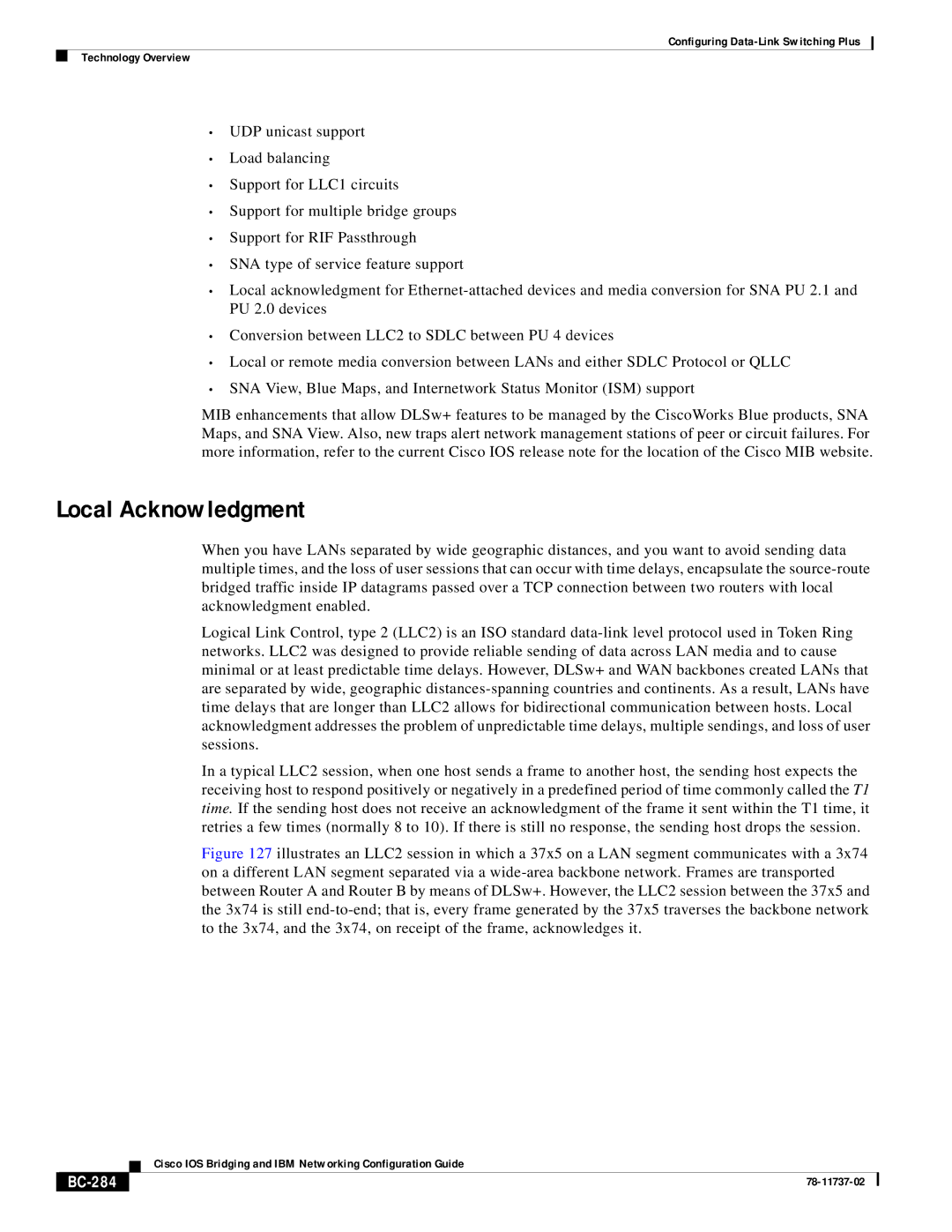
Configuring
Technology Overview
•UDP unicast support
•Load balancing
•Support for LLC1 circuits
•Support for multiple bridge groups
•Support for RIF Passthrough
•SNA type of service feature support
•Local acknowledgment for
•Conversion between LLC2 to SDLC between PU 4 devices
•Local or remote media conversion between LANs and either SDLC Protocol or QLLC
•SNA View, Blue Maps, and Internetwork Status Monitor (ISM) support
MIB enhancements that allow DLSw+ features to be managed by the CiscoWorks Blue products, SNA Maps, and SNA View. Also, new traps alert network management stations of peer or circuit failures. For more information, refer to the current Cisco IOS release note for the location of the Cisco MIB website.
Local Acknowledgment
When you have LANs separated by wide geographic distances, and you want to avoid sending data multiple times, and the loss of user sessions that can occur with time delays, encapsulate the
Logical Link Control, type 2 (LLC2) is an ISO standard
In a typical LLC2 session, when one host sends a frame to another host, the sending host expects the receiving host to respond positively or negatively in a predefined period of time commonly called the T1 time. If the sending host does not receive an acknowledgment of the frame it sent within the T1 time, it retries a few times (normally 8 to 10). If there is still no response, the sending host drops the session.
Figure 127 illustrates an LLC2 session in which a 37x5 on a LAN segment communicates with a 3x74 on a different LAN segment separated via a wide-area backbone network. Frames are transported between Router A and Router B by means of DLSw+. However, the LLC2 session between the 37x5 and the 3x74 is still end-to-end; that is, every frame generated by the 37x5 traverses the backbone network to the 3x74, and the 3x74, on receipt of the frame, acknowledges it.
| Cisco IOS Bridging and IBM Networking Configuration Guide |
|
